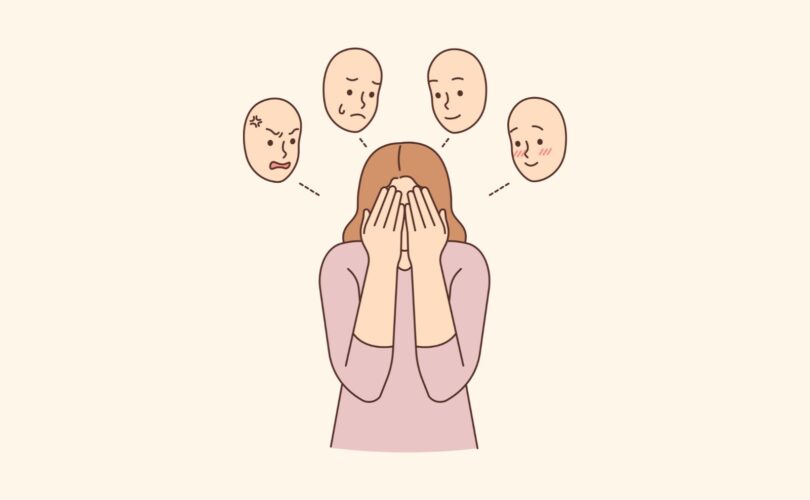All human beings have fears. These can be fears of failure, rejection, physical harm, or anything else in between. While fears are a natural part of life, they can also hold people back from achieving their biggest goals and living the lives they really, truly want. If you struggle to understand your own fears, learning how to understand them better can be a positively life changing experience.
Here are the top ten ways to better understand your fears:
#1 Identify Your Fears
The first step in understanding your fears is to identify them. Take some time to think about what scares you. Write down a list of your fears, no matter how big or small they may seem.
Once you have this specific, written-out list of fears, you can determine if any of them are related to each other. Now that you have a list of everything that specifically causes you to feel and experience fear, you can begin really understanding them. Giving them a name helps them feel more concrete.
#2 Explore The Origins Of Your Fears
All of your fears have their own “origin stories.” Understanding the origins of your fears can help you gain insight into why you are afraid. Ask yourself questions like, “When did this fear first arise?” or “What events or experiences contributed to this fear?”
Once you have a good idea of where your fears originated, you can begin building a stronger understanding of why they invoke negative emotions within you.
#3 Examine Your Beliefs And Values
Fears are often rooted in our beliefs about ourselves, others, and the world around us. Examine your beliefs and ask yourself if they are based in reality or if they are simply limiting beliefs.
A limiting belief is a belief that causes you to place a limitation on yourself without really accepting whether or not the limiting belief is true. For example, a person who fears failure may use the following limiting belief:
“I can’t take on that project at work. I know I will fail horribly.”
This is an example of a limiting belief. This person assumes they’re going to fail at the work project, so they don’t even attempt to take it. They miss out on the opportunity to succeed because of their fear of failing.
#4 Consider The Worst-Case Scenarios Concerning Your Different Fears
Sometimes, fears are rooted in the worst-case scenario that you imagine in your mind. Often, these worst-case scenarios are rooted more in fantasy than reality. Consider what would happen if your fear came true. Would it really be as bad as you think? Probably not! Fear can cause major thought distortions, making your fears seem way scarier and intense than they actually are.
#5 Challenge Your Assumptions About The World Around You
Fears can also be based on assumptions that may not be accurate. Challenge your assumptions and ask yourself if they are really true. This isn’t always easy – sometimes, assumptions are based on past experiences. Allow yourself to limit or pause your fear until you have all the facts on the situation first.
#6 Practice Mindfulness Techniques And Exercises To Calm Yourself During Moments Of Heightened Fearfulness
Mindfulness can help you become more aware of your fears and how they impact your thoughts and behavior. By practicing mindfulness, you can learn to observe your thoughts without judgment and develop a greater sense of self-awareness. Mindfulness exercises can also help calm yourself down if you’re experiencing a particularly difficult fear-based scenario, such as an anxiety attack.
#7 Seek Feedback From Others When You Are Experiencing Fear
Sometimes, fears are based on misconceptions or misunderstandings. Seek feedback from others to gain a better understanding of the situation and your fears. Rather than allowing your feelings of fear to take control, seek more information on what causes you to feel fear. More often than not, having more knowledge about the fear-inducing subject will help you understand the fear more clearly.
#8 Educate Yourself About What Causes You To Experience Fear
Learning more about your fears can help you better understand them. Read books, attend workshops or seminars, or seek the guidance of a therapist to gain more knowledge.
You can also reach out to other people (or even support groups) who understand your fears because they also have them. Finding solidarity through knowledge and information is a fantastic way to understand your fears a little better.
#9 Practice Exposure Therapy To Lessen The Effects Your Fears Have On You
Exposure therapy involves gradually exposing yourself to the things that scare you in a safe and controlled environment. By facing your fears in a way that is less intimidating, you can learn that they are not as scary as you once thought. For example, a person who is afraid of spiders may begin exposure therapy by simply browsing photos of spiders online or in books.
After a while, they can escalate to seeing a real spider in an animal exhibit. Over time, this type of gradually increasing exposure will make the fear of spiders feel far less intense.
#10 Take Some Real Action On Conquering Your Fears By Taking The First Step
Ultimately, the best way to understand your fears is to take action in conquering them for good. Face your fears head-on and take steps to overcome them. This may involve seeking support from others, practicing self-care, or pushing yourself outside of your comfort zone.
The hardest part of going through a fear-conquering journey is getting started. Staying safely inside your comfort zone and avoiding your fears may seem like the easiest solution, but it does not fix the problem long term.
Avoiding your fears forever can also cause your life to feel less fulfilling, especially if you are skipping out on opportunities because they are related to your fears. Rather than allowing yourself to live a limited life controlled by your fears, challenge yourself to take that crucial first step in understanding your fears better by actually getting started.








